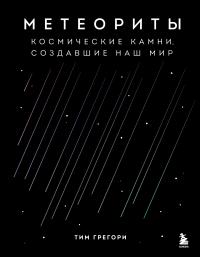69
Joseph Campbell, The Hero with a Thousand Faces, Vol. 17 (Novato, CA: New World Library, 2008). (Кэмпбелл Дж. Тысячеликий герой. – СПб.: Питер, 2021.) Поскольку работу Проппа перевели на английский только в 1958 г. и до этого большинство о ней не подозревало, книга Кэмпбелла получила фору почти в 10 лет.
70
Gerald I. Davis, Gilgamesh: The New Translation (Bridgeport, CT: Insignia Publishing, 2014).
71
Andrew J. Reagan, Lewis Mitchell, Dilan Kiley, Christopher M. Danforth, and Peter Sheridan Dodds, «The Emotional Arcs of Stories Are Dominated by Six Basic Shapes,» EPJ Data Science 5, no. 1 (2016): 1–12.
72
Rahav Gabay, Boaz Hameiri, Tammy Rubel-Lifschitz, and Arie Nadler, «The Tendency for Interpersonal Victimhood: The Personality Construct and Its Consequences,» Personality and Individual Differences 165 (2020): 110134.
73
Jeffrey A. Bridge, Joel B. Greenhouse, Donna Ruch, Jack Stevens, John Ackerman, Arielle H. Sheftall, Lisa M. Horowitz, Kelly J. Kelleher, and John V. Campo, «Association Between the Release of Netflix's 13 Reasons Why and Suicide Rates in the United States: An Interrupted Time Series Analysis,» Journal of the American Academy of Child & Adolescent Psychiatry 59, no. 2 (2020): 236–243.
74
Daniel Romer, «Reanalysis of the Bridge et al. Study of Suicide Following Release of 13 Reasons Why,» PLoS One 15, no. 1 (2020): e0227545.
75
Jean-Jacques Rousseau, A Discourse on Inequality (London: Penguin, 1985). (Руссо Ж.-Ж. Рассуждение о происхождении и основаниях неравенства между людьми // Трактаты. – М.: Наука, 1969.) См. также: Adam Smith, The Theory of Moral Sentiments, Vol. 1 (London: J. Richardson, 1822). (Смит А. Теория нравственных чувств. – М.: Республика, 1997.)
76
David Hume, A Treatise of Human Nature (Mineola, NY: Dover Publications, 2003). (Юм Д. Трактат о человеческой природе. – М.: АСТ, 2022.) Также: Brian Skyrms, The Stag Hunt and the Evolution of Social Structure (Cambridge: Cambridge University Press, 2004).
77
Daniel C. Dennett, «The Self as the Center of Narrative Gravity,» in Self and Consciousness: Multiple Perspectives, ed. Frank S. Kessel, Pamela M. Cole, Dale L. Johnson, and Milton D. Hakel (Hillsdale, NJ: Lawrence Erlbaum, 1992), 103–115; Simon Baron-Cohen, «The Autistic Child's Theory of Mind: A Case of Specific Developmental Delay,» Journal of Child Psychology and Psychiatry 30, no. 2 (1989): 285–297.
78
Helen L. Gallagher and Christopher D. Frith, «Functional Imaging of 'Theory of Mind,'» Trends in Cognitive Sciences 7, no. 2 (2003): 77–83; Sara M. Schaafsma, Donald W. Pfaff, Robert P. Spunt, and Ralph Adolphs, «Deconstructing and Reconstructing Theory of Mind,» Trends in Cognitive Sciences 19, no. 2 (2015): 65–72.
79
W. Gavin Ekins, Ricardo Caceda, C. Monica Capra, and Gregory S. Berns, «You Cannot Gamble on Others: Dissociable Systems for Strategic Uncertainty and Risk in the Brain,» Journal of Economic Behavior & Organization 94 (2013): 222–233.
80
Birgit A. Völlm, Alexander N. W. Taylor, Paul Richardson, Rhiannon Corcoran, John Stirling, Shane McKie, John F. W. Deakin, and Rebecca Elliott, «Neuronal Correlates of Theory of Mind and Empathy: A Functional Magnetic Resonance Imaging Study in a Nonverbal Task,» NeuroImage 29, no. 1 (2006): 90–98.
81
Solomon E. Asch, «Effects of Group Pressure Upon the Modification and Distortion of Judgments,» in Groups, Leadership and Men: Research in Human Relations, ed. Harold Guetzkow (Pittsburgh, PA: Carnegie Press, 1951).
82
Gregory S. Berns, Jonathan Chappelow, Caroline F. Zink, Giuseppe Pagnoni, Megan E. Martin-Skurski, and Jim Richards, «Neurobiological Correlates of Social Conformity and Independence During Mental Rotation,» Biological Psychiatry 58, no. 3 (2005): 245–253.
83
Stanley Milgram, «Behavioral Study of Obedience,» Journal of Abnormal and Social Psychology 67, no. 4 (1963): 371–378.
84
В XXI в. эксперименты были воспроизведены в Польше. Dariusz Dolinski, Tomasz Grzyb, Michał Folwarczny, Patrycja Grzybała, Karolina Krzyszycha, Karolina Martynowska, and Jakub Trojanowski, «Would You Deliver an Electric Shock in 2015? Obedience in the Experimental Paradigm Developed by Stanley Milgram in the 50 Years Following the Original Studies,» Social Psychological and Personality Science 8, no. 8 (2017): 927–933.
85
Daniel Kahneman and Amos Tversky, «Prospect Theory: An Analysis of Decision Under Risk,» Econometrica 47, no. 2 (1979): 263–292.
86
Jan B. Engelmann, C. Monica Capra, Charles Noussair, and Gregory S. Berns, «Expert Financial Advice Neurobiologically 'Offloads' Financial Decision-Making Under Risk,» PLoS One 4, no. 3 (2009): e4957.
87
Эта стратегия называется «довольствование имеющимся» (satisficing). Herbert A. Simon, «Rational Choice and the Structure of the Environment,» Psychological Review 63, no. 2 (1956): 129–138.
88
James Surowiecki, The Wisdom of Crowds: Why the Many Are Smarter Than the Few and How Collective Wisdom Shapes Business, Economies, Societies and Nations (New York: Doubleday, 2004). (Шуровьески Дж. Мудрость толпы. Почему вместе мы умнее, чем поодиночке, и как коллективный разум влияет на бизнес, экономику, общество и государство. – М.: Манн, Иванов и Фербер, 2013.)
89
Francis Galton, «Vox Populi (the Wisdom of Crowds),» Nature 75, no. 7 (1907): 450–451.
90
Guido Biele, Jörg Rieskamp, Lea K. Krugel, and Hauke R. Heekeren, «The Neural Basis of Following Advice,» PLoS Biology 9, no. 6 (2011): e1001089.
91
Morton Deutsch and Harold B. Gerard, «A Study of Normative and Informational Social Influences upon Individual Judgment,» Journal of Abnormal and Social Psychology 51, no. 3 (1955): 629–636; Robert B. Cialdini and Noah J. Goldstein, «Social Influence: Compliance and Conformity,» Annual Review of Psychology 55 (2004): 591–621.
92
Не все исследователи согласны с этой логикой. Ее слабое место – необходимость выявить на основании паттерна нейронной активности конкретный когнитивный процесс. Расс Полдрак, стэнфордский профессор и один из пионеров нейровизуализации, описал трудности вычленения психических процессов из нейронной активности в своей авторитетной статье (Russell A. Poldrack, «Can Cognitive Processes Be Inferred from Neuroimaging Data?» Trends in Cognitive Sciences 10, no. 2 [2006]: 59–63). Он доказывал, что из-за тесной взаимосвязи между областями мозга у каждой из них может быть не одна функция. И поэтому происходящее в любой области в тот или иной момент зависит не только от ее собственной нейронной активности, но и от происходящего в связанных с ней областях. Из-за этой взаимосвязанности, как утверждал Полдрак, определить психический процесс, исходя исключительно из активности в какой-то одной области, мы не можем. Он называл эту проблему «обратным выводом». Однако он же подготовил и потенциальное решение, собрав результаты тысяч экспериментов с использованием фМРТ в общую базу данных под названием Neurosynth. Теперь мы можем задавать поиск когнитивного процесса по этой базе, выясняя, какие области мозга связаны с теми или иными психологическими терминами. Или можно искать в режиме обратного вывода, выясняя вероятность связи определенной области с определенным психологическим термином.



![Метеориты. Космические камни, создавшие наш мир [litres] - Тим Грегори](https://cdn.my-library.info/books/327119/327119.jpg)

